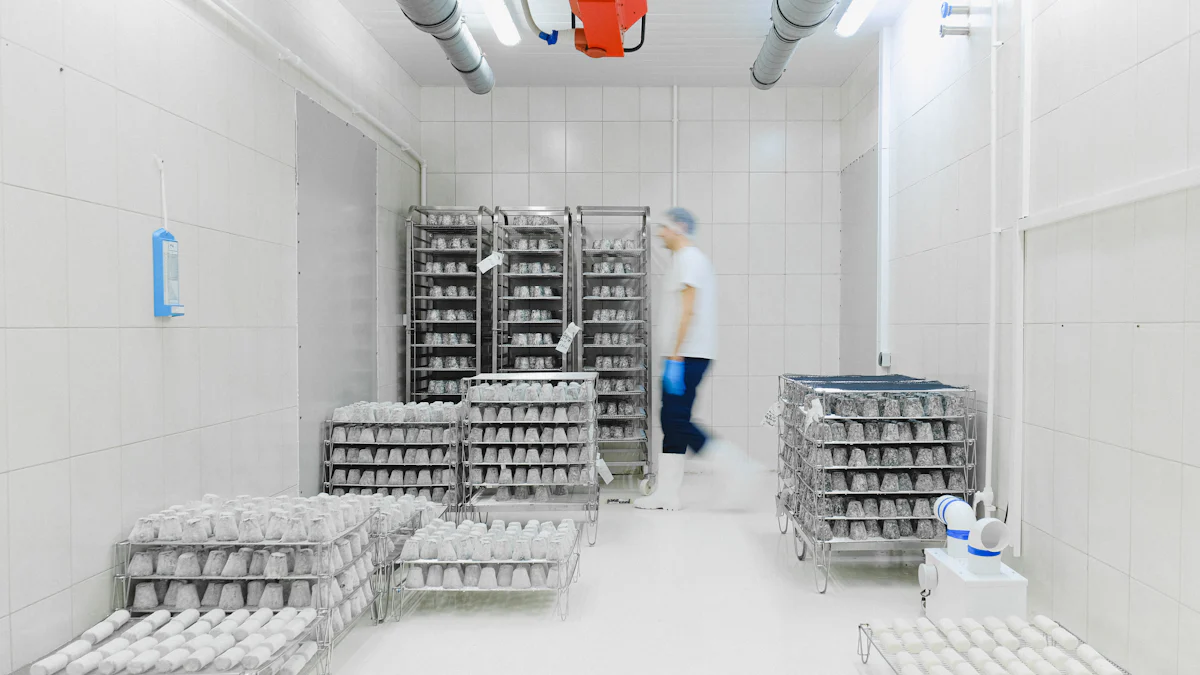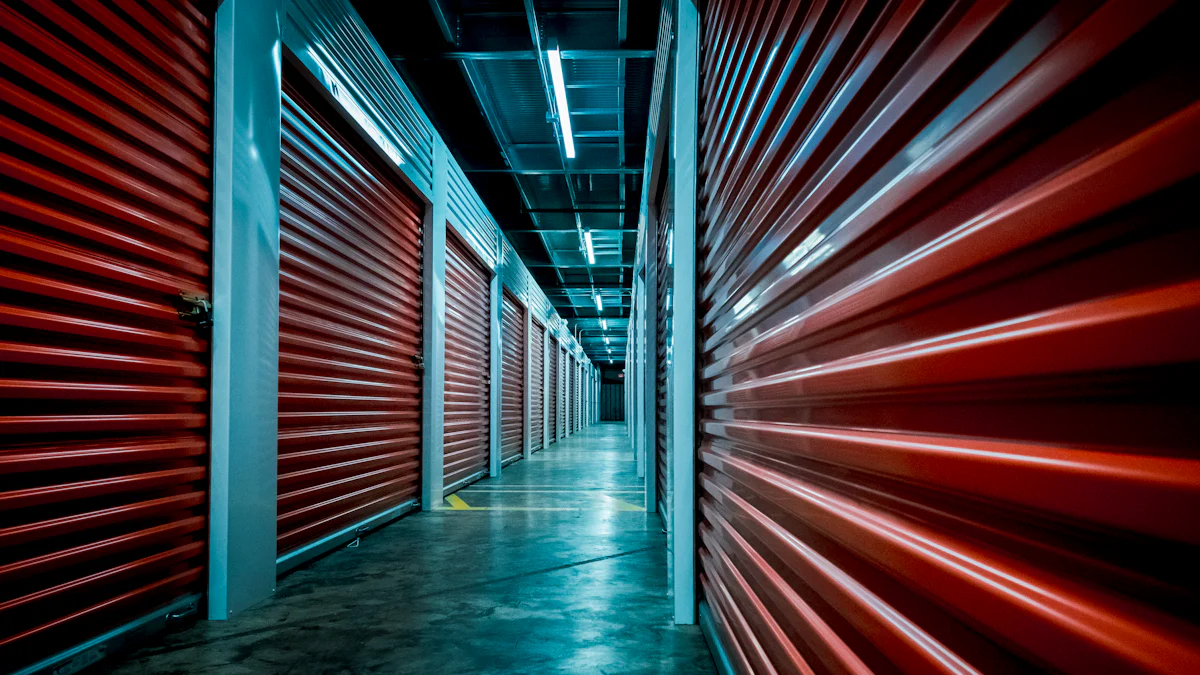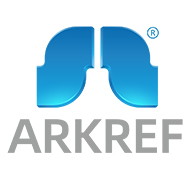What You Should Know About Cold Room Functions

A cold room serves a vital function of cold room for preserving perishable goods by maintaining precise temperature ranges. It slows down deterioration and prevents bacterial growth, ensuring the safety and quality of items like food, flowers, and medicines. Cold storage plays a crucial role in industries such as food, pharmaceuticals, and logistics, where temperature-sensitive products demand careful handling. Walk-in cold storage enhances efficiency by offering ample space and reliable conditions for bulk food storage, safeguarding freshness and extending shelf life.
What Is a Cold Room and Its Primary Purpose?
Definition of a Cold Room
A cold room is a specialised refrigerated space designed to maintain a controlled environment for storing perishable goods. It ensures precise temperature regulation, which is essential for preserving the quality and safety of items like food, medicines, and flowers. Unlike standard refrigeration units, cold rooms are larger and more versatile, making them suitable for both bulk storage and specific temperature-sensitive products. These facilities are commonly used in industries where reliable and consistent cooling is critical.
The Function of Cold Room in Preserving Goods
The primary function of cold room systems is to slow down the natural deterioration of perishable goods. By maintaining low temperatures, they inhibit bacterial growth and extend the shelf life of items. For instance, in food storage, cold rooms keep fruits, vegetables, dairy, and meat fresh for longer periods. They also play a vital role in preserving pre-prepared and pre-cooked meals, which helps save time during food preparation. Beyond food, cold rooms are indispensable for safeguarding pharmaceuticals and other sensitive products that require exact climatic conditions.
Common Applications of Cold Storage Across Industries
Cold rooms serve a wide range of industries due to their ability to provide consistent and powerful refrigeration. Some common applications include:
Food and Beverage Industry: Cold rooms are essential for storing raw ingredients, pre-cooked meals, and beverages. They ensure that food remains safe for consumption while retaining its freshness and flavour.
Pharmaceutical Sector: Medicines, vaccines, and other healthcare products often require specific temperature ranges. Cold rooms provide the necessary environment to maintain their efficacy.
Agriculture and Floriculture: Farmers and florists use cold rooms to store produce and flowers, preventing spoilage and ensuring they reach consumers in optimal condition.
Logistics and Supply Chain: Cold rooms support the transportation and storage of temperature-sensitive goods, ensuring they remain intact throughout the supply chain.
These applications highlight the versatility and importance of cold storage solutions in modern industries. Whether you manage a restaurant, a pharmacy, or a logistics company, a cold room can significantly enhance your operational efficiency and product quality.
How Does a Cold Room Work?

Understanding how a cold room operates is essential for ensuring its efficiency and reliability. These systems are designed to maintain specific temperature conditions, making them indispensable for preserving perishable goods. By exploring the key components and temperature ranges, you can gain a clearer picture of how these facilities function.
Key Components of a Cold Room
The effectiveness of a cold room depends on its core components. Each part plays a vital role in maintaining the desired environment for refrigerated food storage and frozen food storage.
Insulated Panels and Doors
Insulated panels form the walls, ceiling, and floor of a cold room. These panels prevent heat transfer, ensuring the internal temperature remains stable. High-quality insulation minimises energy loss, which enhances efficiency. Doors with proper sealing mechanisms further contribute to maintaining the controlled environment. Without these features, the cold room would struggle to sustain the required conditions for food storage or frozen foods.
Refrigeration Systems
Refrigeration systems are the backbone of any cold room. They include compressors, condensers, evaporators, and expansion valves. These components work together to remove heat from the refrigerating chamber and maintain the desired temperature. The compressor circulates refrigerant, while the evaporator absorbs heat from the interior. This process ensures that the cold room remains effective for storing perishable goods.
Temperature Monitoring and Control Systems
Temperature control is crucial for the function of cold room systems. Advanced monitoring devices track the internal temperature and alert you to any fluctuations. These systems allow you to adjust settings easily, ensuring the environment remains suitable for refrigerated food storage or frozen food storage. Reliable control mechanisms are essential for industries like healthcare and food storage, where even minor temperature changes can compromise product quality.
Temperature Ranges in Cold Storage
Cold rooms cater to different storage needs by offering specific temperature ranges. These ranges ensure that various products remain in optimal condition.
Chilled Storage (0°C to 10°C)
Chilled storage is ideal for items that require cool but not freezing conditions. This range suits fresh produce, dairy products, and beverages. Walk-in fridges often operate within this range, providing ample space for bulk storage. Maintaining this temperature slows down bacterial growth, preserving the freshness and safety of your goods.
Freezer Storage (-18°C and below)
Freezer storage is essential for frozen foods like meat, seafood, and pre-cooked meals. At temperatures of -18°C or lower, bacterial activity halts entirely, extending the shelf life of these items. Walk-in cold rooms designed for freezer storage offer a reliable solution for businesses handling large quantities of frozen goods. These facilities ensure that frozen food storage remains efficient and organised.
By understanding these components and temperature ranges, you can optimise the performance of your cold room. Whether you manage a walk-in fridge or a walk-in cold room, proper maintenance and monitoring will help you achieve consistent results.
Benefits of Using a Cold Room
Preservation of Perishable Goods
A cold room plays a critical role in preserving perishable goods by maintaining the ideal temperature for their storage. By slowing down deterioration and preventing bacterial growth, it ensures that items like fresh produce, dairy products, and meat remain safe for consumption. This preservation extends the shelf life of your goods, reducing waste and saving costs. For example, in food storage, cold rooms help retain the freshness and quality of fruits and vegetables, ensuring they reach consumers in optimal condition. Whether you manage a restaurant or a grocery store, using a cold room guarantees that your products stay in their best state for longer periods.
Enhanced Storage Efficiency
Cold storage rooms provide a highly efficient solution for managing large quantities of perishable items. Their spacious design allows you to organise goods systematically, making it easier to locate and access them when needed. This efficiency reduces the time spent on inventory management and minimises spoilage. For businesses handling bulk food storage, a walk-in cold room offers the added advantage of accommodating a wide range of products under one roof. By maintaining consistent temperatures, these facilities ensure that your goods remain intact and ready for use, enhancing overall operational productivity.
Energy Efficiency and Cost Savings
Modern cold rooms are designed with energy efficiency in mind, helping you save on operational costs. Insulated panels and advanced refrigeration systems minimise energy loss, ensuring that the internal temperature remains stable without excessive power consumption. Temperature monitoring systems further optimise energy use by maintaining precise conditions for refrigerated goods. Over time, these features translate into significant cost savings for your business. Additionally, by reducing spoilage and extending the shelf life of your products, cold rooms contribute to better resource management and lower financial losses.
Improved Product Quality and Safety
A cold room ensures that your products maintain their original quality by providing a stable and controlled environment. By keeping perishable goods at the right temperature, it prevents bacterial growth and slows down natural deterioration. This preservation process safeguards the texture, flavour, and nutritional value of items like fresh produce, dairy, and meat. For businesses in the food industry, this means delivering products to customers in their best condition.
Using a walk-in cold room for food storage also enhances safety. Temperature-sensitive goods, such as seafood or pre-cooked meals, require precise refrigeration to remain safe for consumption. A well-maintained cold room eliminates the risk of spoilage, ensuring that your inventory meets health and safety standards. This reliability is especially critical for industries like healthcare, where medicines and vaccines must stay effective under specific conditions.
The benefits of using a walk-in cold room extend beyond just preservation. It allows you to store large quantities of refrigerated goods without compromising their quality. This capability reduces waste, as fewer items spoil before use. By prolonging shelf life, you can optimise your inventory management and minimise financial losses. Whether you run a restaurant, a grocery store, or a pharmaceutical facility, a cold room becomes an essential tool for maintaining high standards.
Practical Considerations for Walk-In Cold Rooms
When planning to install or maintain a walk-in cold room, you must consider several factors to ensure its efficiency and longevity. Proper installation, regular maintenance, and thoughtful design choices will help you optimise its performance for your specific needs.
Installation Factors
Space Requirements
The first step in installing a cold room is assessing the available space. You need to ensure that the area can accommodate the size of the unit while allowing for proper ventilation and accessibility. A poorly planned location can hinder the efficiency of the refrigeration system. For example, placing the cold room in a cramped or poorly ventilated area may lead to overheating of the machinery. Always measure the dimensions of the space and consider the layout of your facility to ensure seamless integration.
Power Supply and Energy Efficiency
A reliable power supply is essential for the consistent operation of your cold room. You should evaluate the electrical capacity of your facility to ensure it can support the energy demands of commercial refrigeration. Modern cold rooms often come with energy-efficient features, such as insulated panels and advanced compressors, which reduce power consumption. Choosing an energy-efficient model not only lowers operational costs but also minimises your environmental impact. By investing in energy-efficient refrigeration, you can achieve long-term savings while maintaining optimal performance.
Maintenance Tips for Cold Storage
Regular Cleaning and Inspection
Routine cleaning and inspection are vital for maintaining the functionality of your cold room. Dust and debris can accumulate on the refrigeration components, reducing their efficiency. You should clean the interior surfaces, including walls and shelves, to prevent bacterial growth and contamination. Inspect the seals on doors regularly to ensure they remain airtight. Damaged seals can allow warm air to enter, compromising the temperature stability required for food storage or other perishable goods.
Monitoring Temperature Consistency
Temperature consistency is crucial for preserving the quality of refrigerated items. You should use monitoring systems to track the internal temperature of your cold room. These systems alert you to any fluctuations, enabling you to address issues promptly. For example, a sudden rise in temperature could indicate a malfunction in the refrigeration system. By acting quickly, you can prevent spoilage and ensure the safety of your stored goods. Regularly calibrating your monitoring devices will also help maintain their accuracy.
Design and Customisation Options
Modular Walk-In Cold Rooms
Modular cold rooms offer flexibility in design and installation. These units consist of prefabricated panels that can be assembled to fit your specific requirements. Modular designs are ideal for businesses in the hospitality sector, where space constraints and changing needs often demand adaptable solutions. You can expand or reconfigure the cold room as your business grows, making it a cost-effective choice for long-term use.
Tailored Solutions for Industry Needs
Every industry has unique requirements for cold storage. Tailored solutions allow you to customise your cold room to meet these specific needs. For instance, a restaurant may prioritise easy access and organisation for food storage, while a pharmaceutical facility may require precise temperature control for sensitive products. Customisation options include shelving configurations, specialised refrigeration systems, and advanced monitoring technologies. By tailoring your cold room, you can enhance its functionality and ensure it aligns with your operational goals.
"Cold storage makes it possible to prolong the life of products which would otherwise perish." This statement highlights the importance of maintaining and customising your cold room to suit your needs. Whether you manage a hospitality business or a logistics operation, these practical considerations will help you maximise the benefits of your investment.
Industries and Scenarios Where Walk-In Cold Storage Is Essential

Walk-in cold storage plays a pivotal role in various industries. It ensures the preservation of temperature-sensitive goods, maintaining their quality and safety. Below are some key sectors where walk-in cold rooms prove indispensable.
Food and Beverage Industry
In the food and beverage sector, maintaining freshness is critical. Walk-in cold rooms provide the ideal environment for storing raw ingredients, pre-cooked meals, and beverages. By keeping these items at precise temperatures, you can prevent spoilage and extend their shelf life.
Restaurants and Catering Services: You can store bulk quantities of perishable items like meat, seafood, and dairy products. This ensures that your kitchen operates efficiently without frequent restocking.
Supermarkets and Grocery Stores: Cold rooms help you organise and preserve fresh produce, frozen foods, and chilled beverages. This guarantees that customers receive high-quality products.
Food Production Facilities: If you manage a food processing unit, walk-in cold storage allows you to maintain the integrity of raw materials and finished goods.
"Cold storage makes it possible to prolong the life of products which would otherwise perish." This statement highlights the importance of cold rooms in ensuring food safety and reducing waste.
Pharmaceutical and Healthcare Sector
The pharmaceutical and healthcare industry relies heavily on precise temperature control. Walk-in cold rooms provide the stability required to store sensitive medical products.
Medicines and Vaccines: Many medicines and vaccines lose their efficacy if not stored under specific conditions. A cold room ensures that these products remain effective.
Laboratories and Research Facilities: You can use cold storage to preserve biological samples, reagents, and other temperature-sensitive materials. This supports accurate research outcomes.
Hospitals and Clinics: Walk-in cold rooms help you store blood, plasma, and other medical supplies safely. This ensures that these critical resources are available when needed.
Custom-built cold rooms are particularly beneficial in this sector. They allow you to design storage solutions tailored to your facility's unique requirements. For instance, you can integrate advanced monitoring systems to maintain strict temperature control.
Agriculture and Floriculture
In agriculture and floriculture, preserving freshness is essential to meet market demands. Walk-in cold storage provides the perfect solution for farmers and florists.
Fresh Produce Storage: You can store fruits and vegetables in chilled conditions to slow down ripening and prevent spoilage. This ensures that your produce reaches consumers in optimal condition.
Flower Preservation: Florists use cold rooms to maintain the freshness and vibrancy of flowers. This extends their shelf life and enhances customer satisfaction.
Post-Harvest Management: If you are involved in farming, cold storage helps you manage harvested crops effectively. This reduces losses and maximises profits.
Bespoke cold rooms offer significant advantages in this sector. These customised solutions can be designed to fit specific spaces, ensuring efficient use of available areas. Whether you need a modular cold room or a larger bespoke unit, you can optimise storage for your agricultural or floricultural needs.
By investing in walk-in cold storage, you can enhance operational efficiency across these industries. Whether you manage a restaurant, a pharmacy, or a farm, cold rooms provide the reliability and flexibility needed to preserve your products.
Logistics and Supply Chain Management
Efficient logistics and supply chain management rely heavily on maintaining the quality of temperature-sensitive goods. Walk-in cold storage plays a pivotal role in ensuring that products remain in optimal condition throughout their journey from origin to destination. By providing a controlled environment, these facilities help you preserve the integrity of perishable items, reducing spoilage and waste.
In the logistics sector, cold rooms are indispensable for storing goods before transportation. They allow you to maintain precise temperature conditions, ensuring that items such as fresh produce, dairy products, and pharmaceuticals stay intact. For example, modular cold rooms offer flexibility in design, enabling you to adapt them to your specific storage needs. Their adaptability makes them ideal for businesses handling diverse products with varying temperature requirements.
Custom-built cold rooms provide another advantage by integrating seamlessly into your operational layout. These tailored solutions ensure that your storage facilities align with your workflow, enhancing efficiency. For instance, if your business requires large-scale storage, bespoke cold rooms can be designed to maximise capacity while fitting into specific spaces. This customisation ensures that you make the most of your available area without compromising functionality.
Cold storage also supports the transportation phase of the supply chain. Goods stored in walk-in cold storage can be loaded directly into refrigerated vehicles, maintaining the cold chain. This seamless transition minimises temperature fluctuations, which could otherwise compromise product quality. By investing in advanced monitoring systems, you can track temperature consistency during storage and transit, ensuring that your goods meet safety standards.
"Cold storage makes it possible to prolong the life of products which would otherwise perish." This statement underscores the importance of integrating cold rooms into your logistics operations. Whether you manage a food distribution network or a pharmaceutical supply chain, these facilities provide the reliability needed to meet customer expectations.
By incorporating walk-in cold storage into your logistics and supply chain processes, you can enhance operational efficiency and product quality. Tailored solutions, such as modular or bespoke cold rooms, offer the flexibility to meet your unique requirements. These investments not only safeguard your goods but also contribute to the overall success of your business.
Cold rooms have revolutionised how you preserve perishable goods. They maintain precise temperatures, ensuring the safety and quality of items like fresh produce, dairy, and frozen foods. By understanding their function, benefits, and practical considerations, you can optimise their use in your business. Walk-in freezer rooms, for instance, provide ample space for bulk storage while maintaining frozen conditions essential for long-term preservation. To maximise efficiency and longevity, consult professionals for installation and regular maintenance. This proactive approach ensures your cold storage system remains reliable, safeguarding your products and enhancing operational success.
See Also
Exploring The Role Of Cold Storage Facilities
The Importance Of Cold Rooms In Storage
Essential Advice For Managing Cold Room Temperatures

